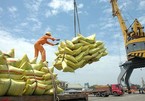However, how many big investors have landed here and is Vietnam only a place for many smaller ones who seek to make full use of tax incentives?

Sources of foreign investments are now more diverse, no longer restricted to capital used to erect factories
Speaking at the Business Forum 2020 held in the middle of last month, Bruno Jaspaert, CEO of DEEP C, a developer of industrial parks, said foreign investment in Vietnam has been accelerated and a new wave of investors is coming. If still in doubt about that, he said, one should come to industrial parks developed by DEEP C in Quang Ninh and Haiphong to witness the trend to believe in it. DEEP C has posted a three-fold growth in investment scale since early this year, said Mr. Jaspaert.
He also contended that it is correct to say that Vietnam has to compete with her surrounding rivals in attracting foreign investment. However, argued Mr. Jaspaert, Vietnam has advantages in the race, such as political stability, an abundant population, a hardworking labor pool and the effective control of the Covid-19 pandemic. Of course, this country is still faced with weaknesses, such as a long time spent by a business to be operational or build its supply chain due to the protracted licensing time and red-tape.
Vu Tu Thanh, managing director of the American Business Council, saw it in a different way. In his opinion, said Mr. Thanh, no sizable conglomerates of multinationals want to withdraw or abandon the Chinese market. By “market,” he meant both a consumption market and production facilities.
The Sino-American trade war and the Coivid-19 pandemic have forced foreign investors to expand operations beyond the Chinese border to avoid high tariffs when shipping goods to America. In other words, these investors try to diversify their production, both in China and somewhere else. This task which had been done before and the new situation only precipitated the process due to several emerging factors.
According to Mr. Thanh, when these multinationals make their markets more diverse, investment will flow to such countries as Thailand, Indonesia and Vietnam, of whom Vietnam may be the first choice. The question then is whether these investments are big and come in droves.
“In my opinion, there aren’t too many of them,” Mr. Thanh answered his own question. “There won’t be a landslide of investments. Several big projects may come, grossing hundreds of millions of U.S. dollars each, but the majority of them are not new investments but only investment expansions. To sum up, there will be very few really big investors who are first-timers to Vietnam.”
Commenting on this argument, veteran economist Pham Chi Lan said she agrees with Mr. Thanh that not many massive investments will be withdrawn from China. According to a survey conducted by the American Chamber of Commerce and Industry (AmCham) in China, some 70% of foreign investment will remain in China because the existing investors’ interest has been closely attached to this market whereas China boasts huge advantages in production unavailable in many other countries.
The investment switch would be 30% at most, the survey shows. However, of this 30%, a great part will be brought back to the mother countries (the United States or Japan), or a nearer location to make supply chains closer.
“The part which goes to other nations will be very selective and requires favorable geographical locations and highly skilled labor,” said Mrs. Lan. “It’s not easy for Vietnam to meet these requirements. Meanwhile, Vietnam has to compete with other rivals, such as India and Indonesia. So, don’t think that the investment inflow into Vietnam will be very big and don’t be overoptimistic about it.”
Vietnam must be ready for non-traditional investment
Mrs. Lan emphasized that in the current context, Vietnam should not embrace everything she is offered by foreign investors. It’s because some sources of investment cannot be accommodated by Vietnam, she said. Worse, there will be investments which, if Vietnam receives them, will be harmful, such as projects that nominally produce goods in Vietnam but are in fact those in disguise to dodge high taxes imposed by the American authorities. There are also projects harmful to the environment, warned Mrs. Lan.
Vu Tu Thanh cited another source of investment which has been so far largely ignored in Vietnam. He said people have often mentioned foreign direct investments related to factories. However, a new source of investment is now available, which involves digital platforms used to switch business models.
According to Mr. Thanh, unlike traditional foreign direct investments, they are investments which use neither local resources nor a large volume of labor, but optimize the advantages gained by Vietnam’s young population, high economic growth and the rapid development of the private sector.
The problem is the legal framework and policies necessary for this investment flow to go on the same track with new technologies are not ready here in Vietnam. “The Government is apparently thinking of it, but it has not yet issued any concrete policies,” said Mr. Thanh.
Acknowledging the new investment forms which are non-traditional, Pham Chi Lan said it needs attention and approval [from the Government]. However, she said special attention must be particularly paid to intellectual property protection of technological platforms to avoid risks on a national scale.
Furthermore, investments in high technology are closely associated with important issues, such as cyberspace security or energy security. Therefore, if one is not sure about his or her own strengths, be careful to take into account the many aspects of the issue and should not rely solely on economic benefit.
“In this case, it needs to have professional comments and evaluation of technological experts, both domestic and foreign, so that every angle must be seen,” said Mrs. Lan.
Last but not least, it is necessary to keep cool head when selecting investment sources of non-traditional investments. According to Lan, they should come from reliable countries where copyrights and intellectual property are respected. This will benefit Vietnam that has set a technical path for her development.
SGT

Vietnam's trade surplus hits record in 10 months
Vietnam’s exports rose 4.7 percent year-on-year in the first ten months of this year to over $229 billion, for a trade surplus of a record $18.7 billion, according to latest report by the General Statistics Office.